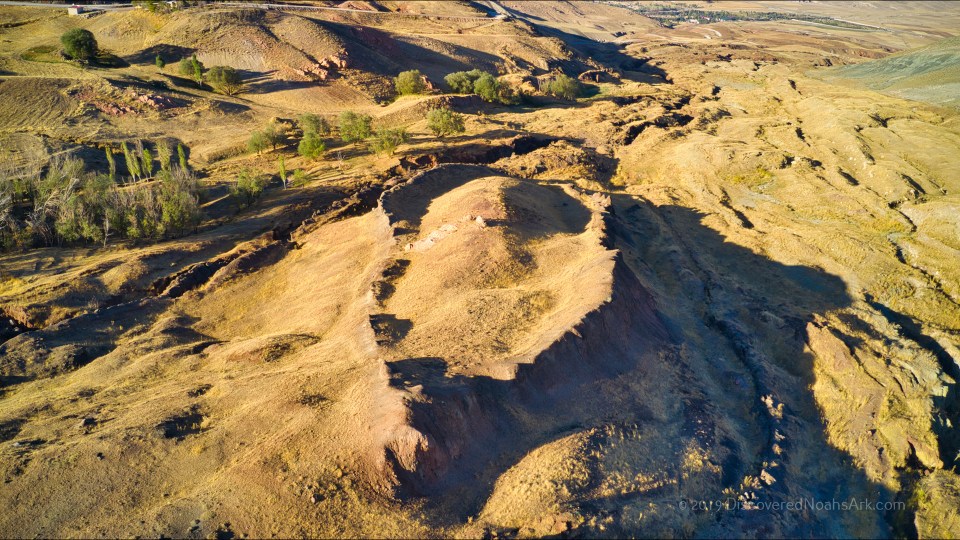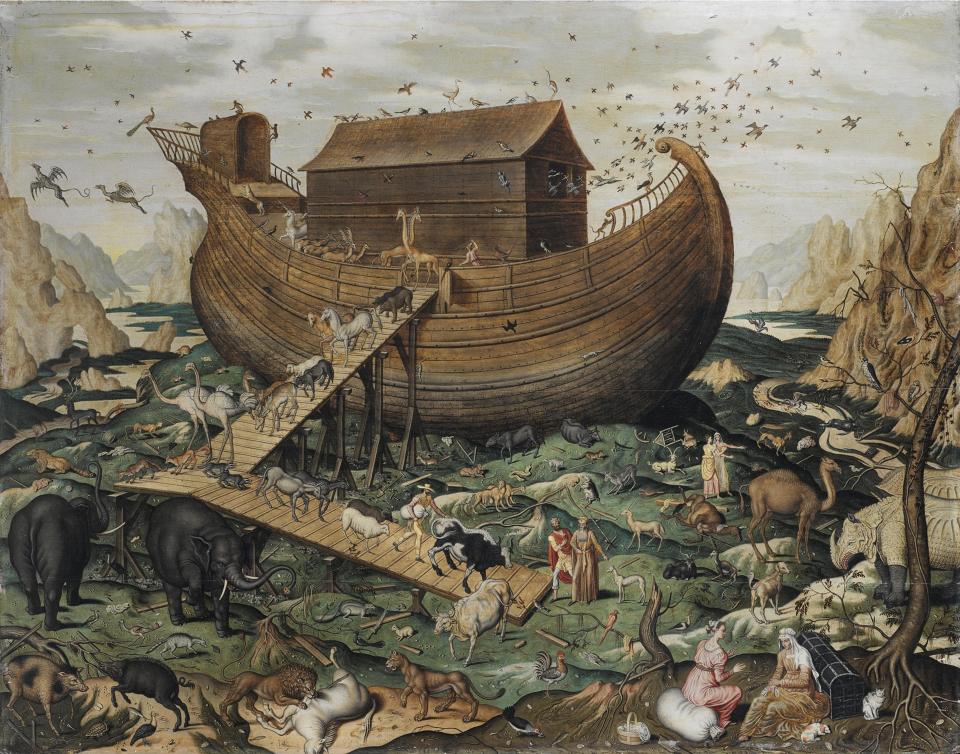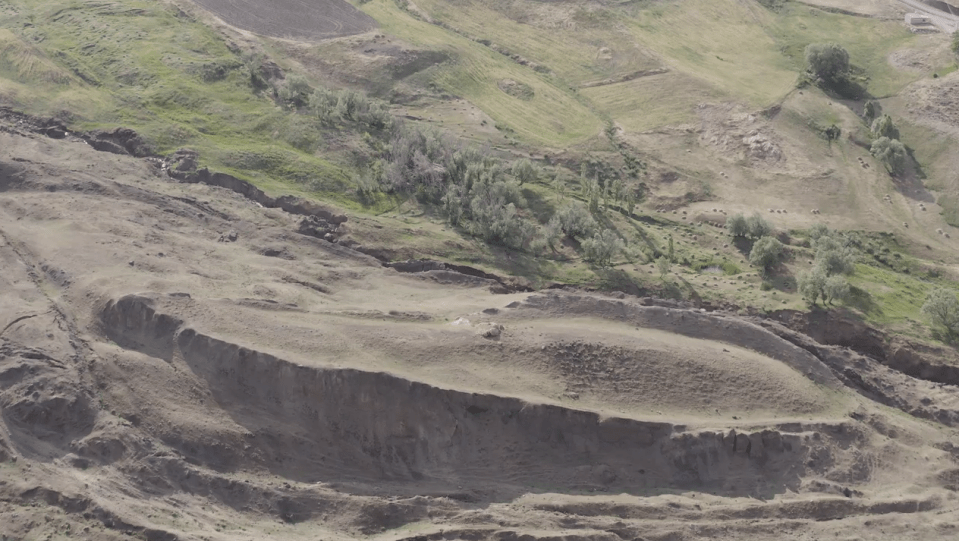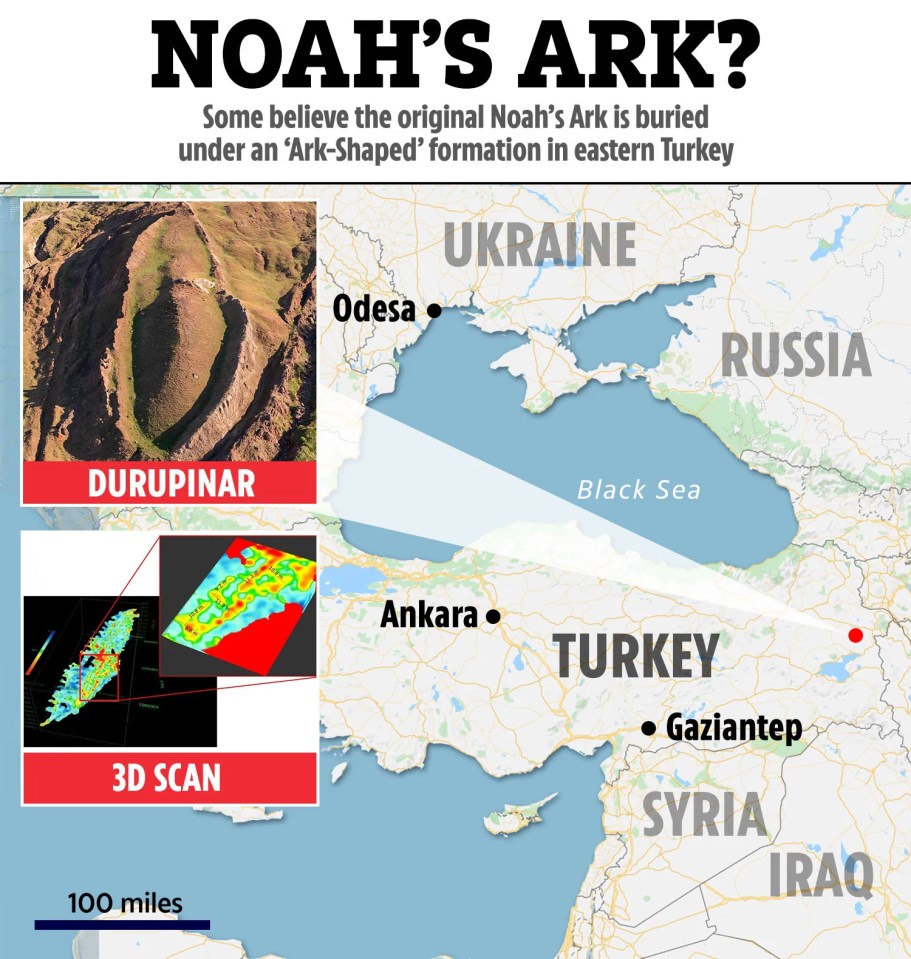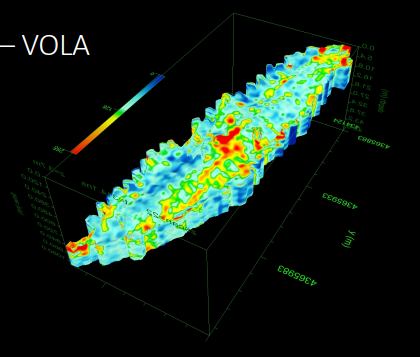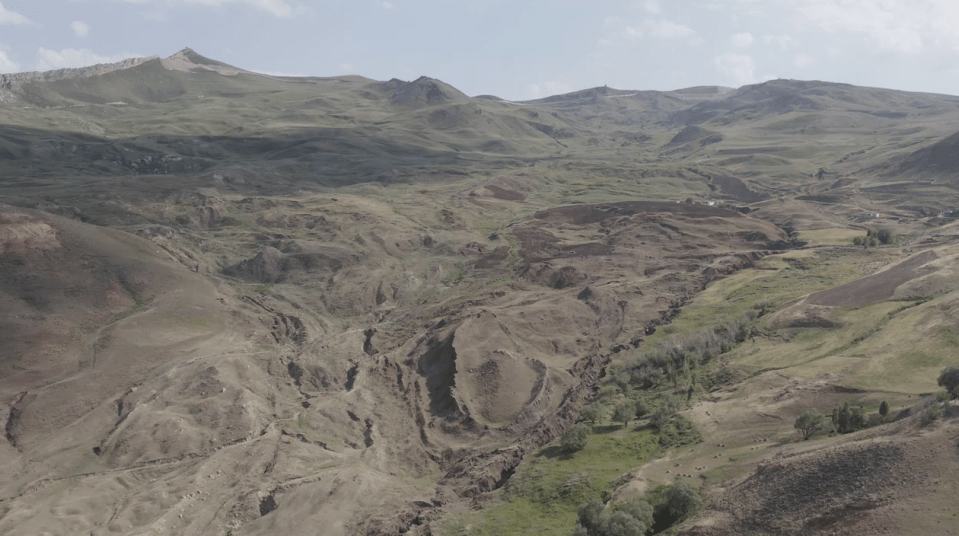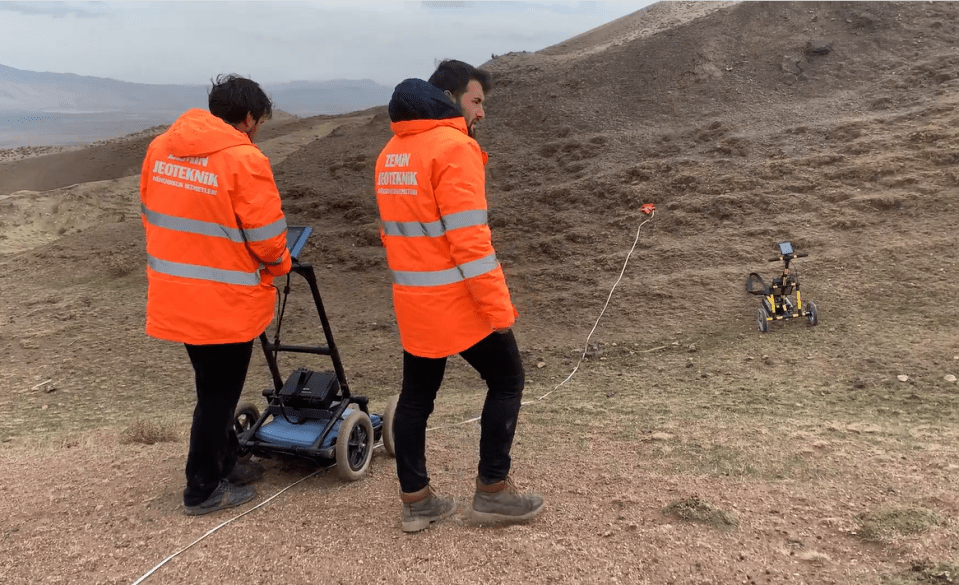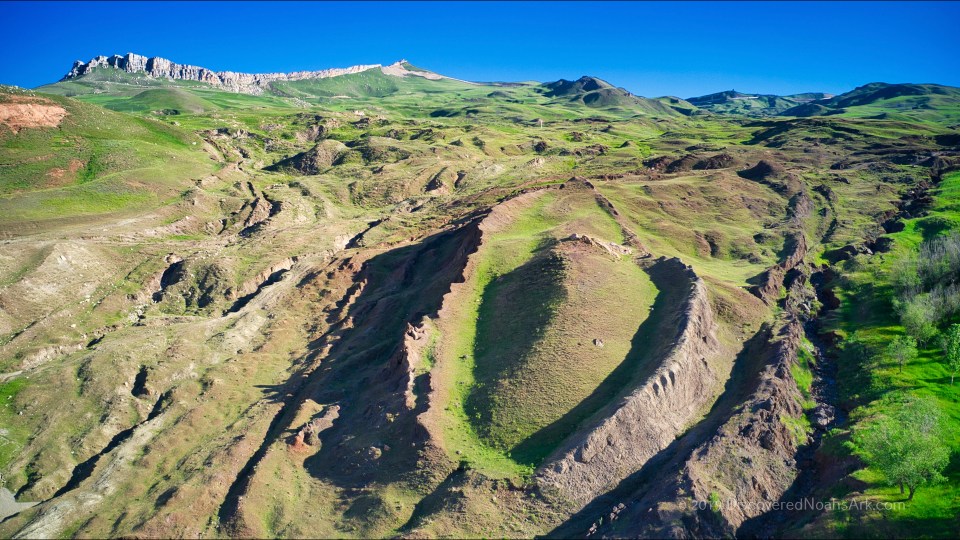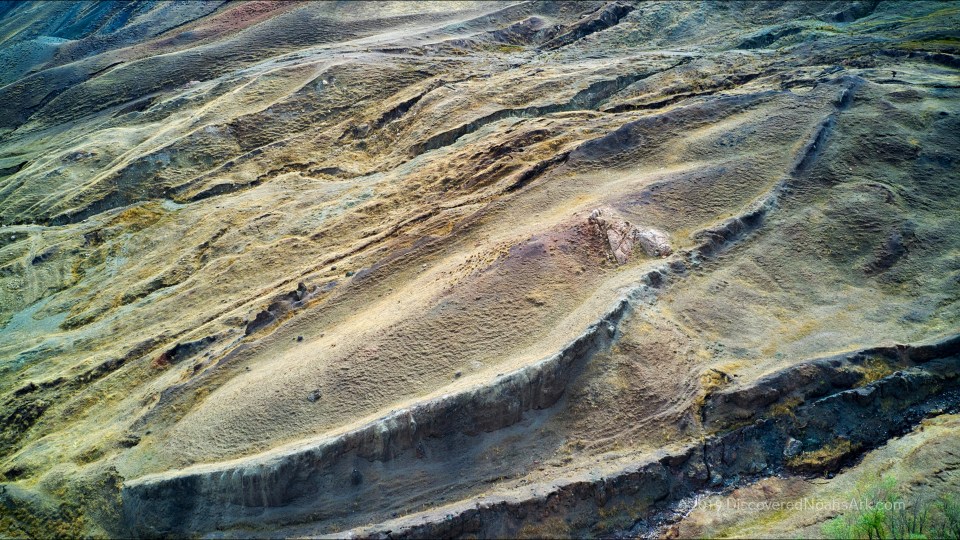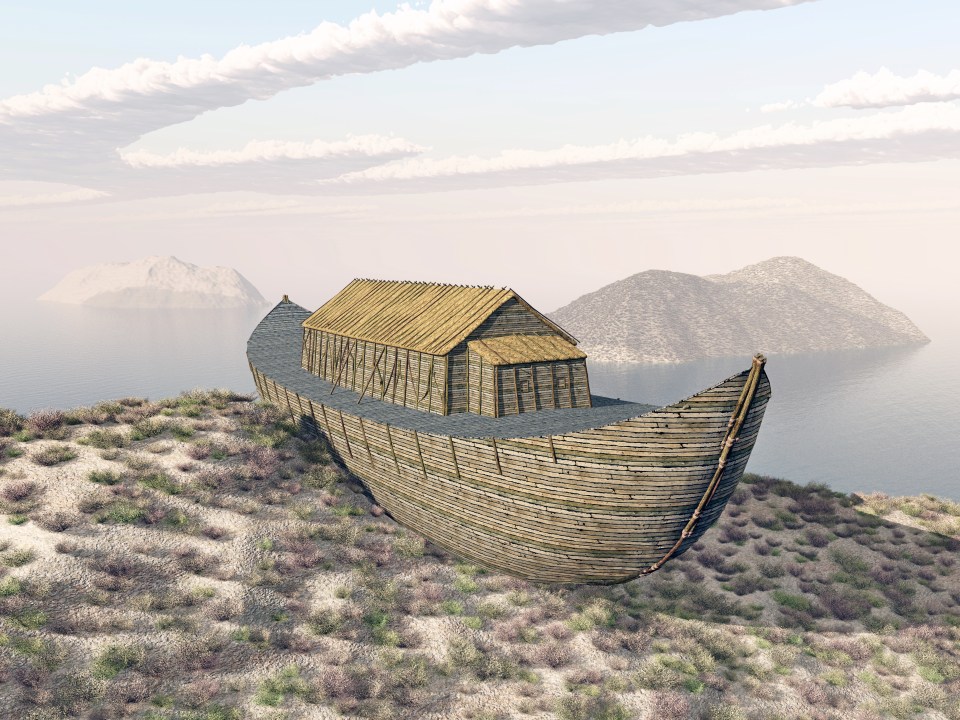ARCHAEOLOGICAL boffins have unveiled a barmy plan to finally prove the existence of Noah’s Ark.
The clever team at Noah’s Ark Scans are determined to solve one of religion‘s greatest mysteries by uncovering where the 510ft vessel is located today.
Researchers believe the great ark is located in Turkey – just 30 kilometres south of the summit of Mount Ararat.
Experts are yet to officially confirm the ark’s existence but many have speculated around the spot due to the legendary Durupinar formation.
A 538ft geological structure made of limonite can be seen lying by the mountain which closely resembles the exact dimensions of the ark, according to the Bible.
Noah’s Ark Scans told The Sun they are confident of uncovering the truth in the coming years and have already laid out their excavation plans.
Operations at what they label the “boat site” haven’t started yet with dozens of geophysical surveys, core drilling, and careful planning still to take place.
Top researcher Andrew Jones said: “The location lies in an active earth flow with harsh winters, so protecting the area is our top priority.
“Over the next few years, our Turkish university partners will conduct non-destructive tests like soil sampling, radar scans, and other methods to determine if the structures we’ve detected are truly man-made or simply natural formations.
“Only after we gather enough evidence and have a proper preservation plan in place will we consider excavating.”
The team have already had several positive results back from testing the land which has only increased their excitement over a match.
Turkish geologist Doctor Memet Salih Bayraktutan collected 22 soil samples from inside and just outside of the “boat shape” last year.
These were shipped off to be analysed at Ataturk University in Erzurum and came back with some remarkable results.
The main takeaways found that there was a lower pH inside the suspected ark structure as well as having a higher organic matter.
More potassium was also clearly see inside compared to outside.
“These changes are consistent with rotting wood,” the research team say.
Another key takeaway the research team discovered was that the grass inside actually turns lighter and more yellow in the autumn.
This has made them believe that the structure is an ancient creation made by man rather than an ecological change to the landscape overtime.
In October 2019, a full ground-penetrating radar (GPR) scan was also carried out at the site using two antenna frequencies.
The goal was to explore different depths through the radar pulses from the machinery which go on to create images of what’s beneath the ground without digging.
It sends electromagnetic waves into the soil which when hit objects – potentially buried artefacts, walls, or graves – they bounce back to a receiver.
Jones described the GPR as “a non-invasive peek into the past”.
It is mainly used to save time, reduces costs, and preserve dig sites.
Initial scans of the site showed rectangular shapes were sat around 22ft down within the boat-shaped formation.
Another American geophysicist re-examined the data and claimed to find a long hallway which opened up into a large central space.
This has led researchers to believe there are still open cavities inside the formation which Noah’s Ark Scans hope to soon drill into.
Why is locating Noah’s Ark important?
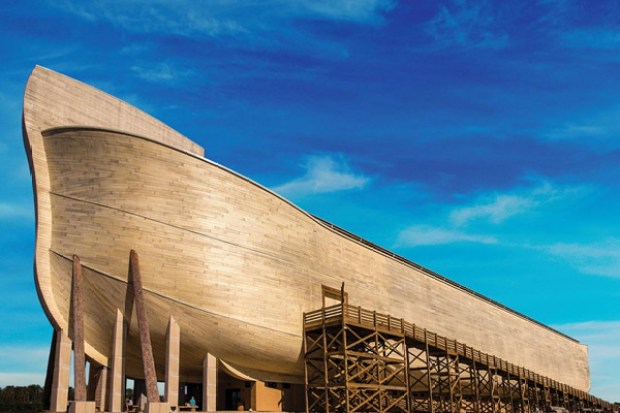
FOR those involved in the research, the importance of the discovery is not just limited to its religious implications.
While Noah’s Ark is a key element in Christianity, Islam, and Judaism, the story also speaks to larger human questions about survival, faith, and the fragility of life in the face of natural disasters.
The team’s findings, particularly the materials embedded in the formation’s soil, suggest that the area may have been submerged in a vast body of water at some point.
Could this be evidence of the Great Flood?
While the theory remains highly speculative, the notion that ancient humans witnessed and survived such a cataclysm has captivated scholars and theologians alike for centuries.
For scientists and archaeologists alike, the potential to link these scientific findings with one of history’s most famous legends is as daunting as it is crucial.
The story is also a key part of the Abrahamic religious traditions (Judaism, Christianity, and Islam) and is often interpreted as a message of faith, obedience, and God’s promise to never destroy the Earth with a flood again.
According to the Book of Genesis, chapters 6 to 9, God decided to flood the Earth because of humanity’s widespread wickedness.
But he chose to spare Noah because of his righteousness and tasked him with building a large ark to save himself, his family, and a pair of every animal.
The team are looking to create a gap and use a camera to see inside without damaging the site.
Jones said: “We also plan to take core samples from across the formation, which should help us confirm whether the right angles and geometric patterns we see on the GPR scans are man-made structures or just natural formations.
“So far, our results support our theories.
“The soil tests suggest this formation isn’t simply part of the surrounding mud flow – it’s a distinct object.”
It comes as startling new archaeological evidence could finally solve another religious mystery.
New clues ate emerging from the dust of one of the world’s most historic sites which could finally settle a long-standing debate over the death of Jesus and where he was buried.


